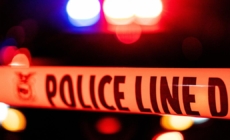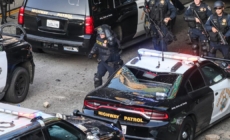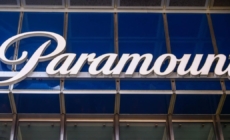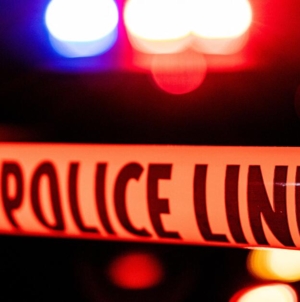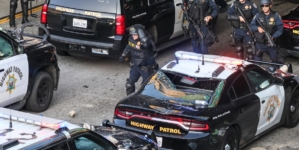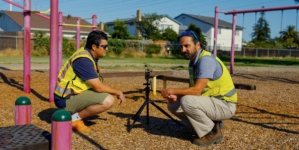-
Masked men impersonating FBI agents rob Jurupa Valley home - 6 mins ago
-
AI Impact: AI May Be the Cure for Doctor Burnout, After All - 8 mins ago
-
Which Young QB Tom Brady Views as a ‘Dark Horse in the MVP Race’ - 9 mins ago
-
Relief organizations pack up supplies for Jamaica in wake of Hurricane Melissa - 10 mins ago
-
Feds charge 12 in alleged arson, attacks during immigration protests - 48 mins ago
-
Trump’s Path to Peace in Sudan Lies With His Arab Influence—And Pressure - 49 mins ago
-
Eagles, Jets Reportedly Swap CB Michael Carter II, WR John Metchie in Trade - 51 mins ago
-
Paramount to lay off 2,000 workers shortly after merging with Skydance - 53 mins ago
-
Christopher Schwarzenegger flaunts 30-pound weight loss results - 55 mins ago
-
WWI soldiers’ messages in a bottle found on Australian beach - 60 mins ago
‘Why wasn’t the fire put out on the 1st?’ Cause of Palisades fire leave residents with more questions
Federal prosecutors’ announcement on Wednesday that the Jan. 7 Palisades fire was a flare-up of a small arson fire that firefighters thought they had contained six days earlier has raised concerns among some residents about how Los Angeles fire officials handled the smaller conflagration.
The first fire, called the Lachman fire, was reported about 12:17 a.m. on New Year’s Day on a hillside above Pacific Palisades by a resident whose home is about two blocks from the popular Skull Rock trail.
Shortly after 3:30 a.m., Los Angeles Fire Department officials reported they had stopped progress of the blaze, a federal investigation found. A little over an hour later, the LAFD reported that firefighters had “completed the hose line around the perimeter of the fire and it is fully contained,” according to an affidavit by an agent with the Bureau of Alcohol, Tobacco, Firearms and Explosives. Some firefighters remained at the site to mop up and ensure the fire didn’t flare up again.
On Jan. 2, federal authorities said, “LAFD personnel returned to the scene to collect the fire hoses. It appeared to them that the fire was fully extinguished,” the affidavit read.
Intense winds on Jan. 7 — which had been predicted by the National Weather Service before that day — reignited the fire and sent it roaring into Pacific Palisades and Malibu.
On Wednesday morning, a handful of Palisades fire survivors huddled in the lobby of the Los Angeles Department of Building and Safety to listen to a news conference announcing charges against the man accused of starting the Jan. 1 fire.
Several former residents of the Pacific Palisades Bowl, a 170-unit mobile home park that burned, had just successfully petitioned for the property to be deemed a public nuisance to compel the owner to pay to remove hazardous ash and wreckage from the site.
Jon Brown, whose family lived in the park for a decade, held his hand over his mouth in disbelief as he learned a fire was intentionally set on New Year’s Day — and that the suspected arsonist was a former Pacific Palisades resident.
But he and his neighbors scoffed as public officials sidestepped questions why that fire’s embers were not completely extinguished.
“I think this is only going to infuriate people, to be honest,” Brown said. “They think that they have done something by finding the guy who did it, but they’re really going to fan the flames on what everybody is really pissed about.
“Why wasn’t the fire put out on the 1st?”
Authorities on Wednesday announced the arrest of an Uber driver, 29-year-old Jonathan Rinderknecht, who is suspected of setting the initial fire. Rinderknecht, who moved to Florida after the fire, was arrested Tuesday and charged with destruction of property by means of fire. He faces a minimum of five years in federal prison.
The Palisades fire charred 23,400 acres and leveled more than 6,800 structures, including many homes. Twelve people died. There have already been questions into deployment levels in the Palisades on Jan. 7 based on a Times investigation.
On the morning of Jan. 7, Darrin Hurwitz, 49, dropped his two children off at Marquez Charter Elementary School at about 8:15 a.m. then went to hike Temescal Ridge Trail, as he did a few times a week. He did a five-mile loop that took him above Skull Rock. At about 9 a.m., he surveyed the burn scar from the New Year’s fire. It was a small scar, he said, just a few acres.
“It was a relatively contained area that had burned, meaning that any pre-deployment of resources at least potentially could have prevented the fire from spreading widely,” he said in an interview Wednesday morning.
It was about an hour before flames would first be spotted, but he smelled smoke. He figured it was coming from another fire somewhere else or it was the remnants of the New Year’s fire.
It was already “extremely windy” as he hiked, he said.
The trail was quiet that morning, and he saw no firefighting resources in the area on the ground or in the air. He said of the New Year’s burn scar: “It’s not remote. Where the fire started, you can access from the Highlands. It’s a very short walk. … It would not have been difficult to pre-deploy firefighting resources on the ground there.”
Hurwitz’s house, which was near the trail, burned, as did his children’s school. His family is temporarily relocated in Santa Monica and just started the process of rebuilding their home in Pacific Palisades.
He said it was disturbing to learn that the New Year’s fire allegedly was arson, but that the news on Wednesday raised more questions than answers.
“I think it’s unsettling and unfortunate that anyone would intentionally start a fire. Obviously, I’m not discounting the criminal activity that may have occurred here. But I think the bigger concerns are going to be around fire prevention and firefighting.”
“Any information that helps determine the cause of the fire and helps prevent future fires is obviously important to have, but in this case, the determination that the fire was a rekindling of a small fire that was purportedly extinguished six days before raises far more question than answers. What protocols were in place for ensuring the Lachman fire was fully extinguished? Were they followed? Were resources adequately deployed to the area on Jan. 7 given the extreme wind warnings?”
He said he hopes that “fire detection has to be taken more seriously and pre-deployment of resources has to really be a focus,” and that any fires should be “fully extinguished and monitored.”
Source link
